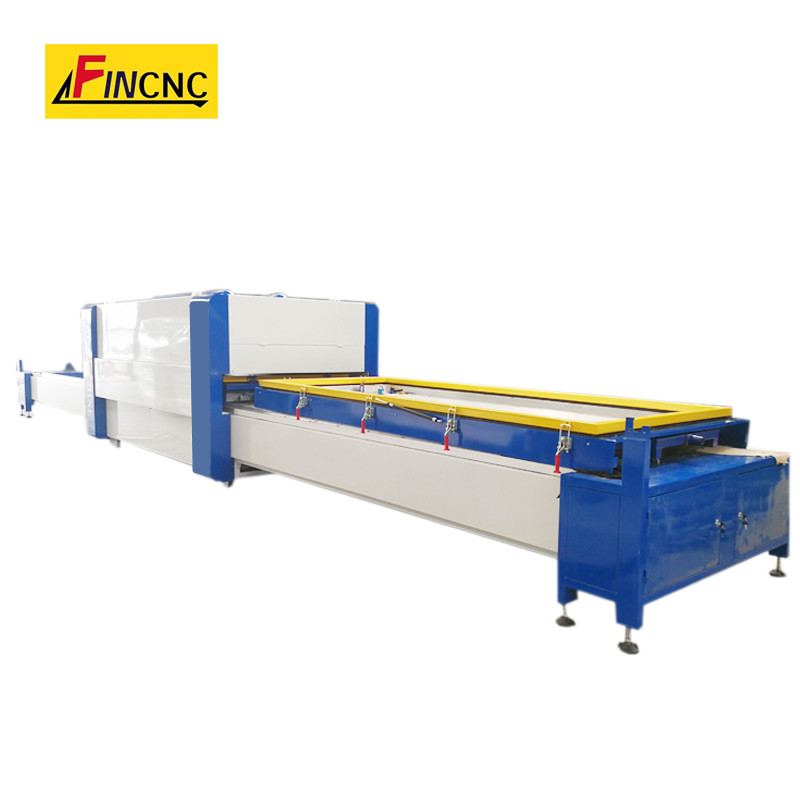Aspects of a vacuum membrane press machine
2023-11-20
A Vacuum Membrane Press Machine is a specialized equipment used in woodworking and furniture manufacturing for the lamination of various materials onto wooden or composite substrates. It employs vacuum technology to create a strong and uniform bond between the substrate and the applied material, which can include veneers, laminates, and 3D foils. Here are key features and aspects of a vacuum membrane press machine:
1. Vacuum Technology:
- The primary operating principle of a vacuum membrane press is to use negative pressure (vacuum) to press a flexible membrane against the workpiece, ensuring even distribution of pressure and adherence of the applied material.
2. Flexible Silicone or Rubber Membrane:
- The machine is equipped with a flexible membrane, often made of silicone or rubber, that conforms to the shape of the workpiece. This eliminates the need for a rigid press plate and allows the machine to handle three-dimensional shapes.
3. Heating System:
- Vacuum membrane presses typically include a heating system to activate the adhesive in the applied material, facilitating bonding with the substrate.
4. Vacuum Pump:
- A vacuum pump generates the negative pressure required for pressing the membrane against the workpiece. The pump creates a vacuum in the chamber, pulling the membrane down onto the substrate.
5. Programmable Controls:
- Modern vacuum membrane presses are equipped with programmable controls, allowing operators to set parameters such as temperature, vacuum pressure, and pressing time. This ensures precision and consistency in the lamination process.
6. Versatility:
- Vacuum membrane presses can handle a variety of materials, including thin veneers, laminates, and 3D foils. They are suitable for a range of woodworking applications.
7. Three-Dimensional Shaping:
- One of the key advantages of vacuum membrane presses is their ability to laminate three-dimensional surfaces with intricate contours and profiles.
8. Ease of Operation:
- These machines are designed for user-friendly operation. Once the workpiece is loaded and the parameters are set, the vacuum membrane press automates the pressing process.
9. Applications:
- Common applications include laminating cabinet doors, furniture components, store fixtures, and other wood-based products. They are also used for the production of doors, panels, and curved elements.
10. Quality and Consistency:
- Vacuum membrane presses ensure high-quality results by providing consistent pressure distribution across the entire surface of the workpiece.
11. Adaptive Technology:
- Some vacuum membrane press machines feature adaptive technology that can adjust to variations in material thickness and shape, optimizing the lamination process.
12. Efficiency and Productivity:
- Vacuum membrane presses contribute to increased efficiency and productivity in woodworking and furniture manufacturing by reducing manual labor and ensuring precise lamination.
These machines are crucial in achieving efficient and high-quality results in the woodworking industry, particularly in tasks that involve shaping and laminating complex surfaces. They play a vital role in producing aesthetically pleasing and durable wood products.



